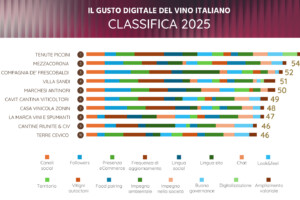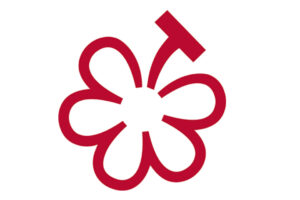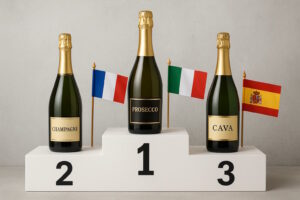The one related to the wine sector is a dynamic and flexible job market, in which transitions from one company to another are quite frequent, but overall rather closed, with “barriers” to entry and a tendency on the part of employers to focus on professionals already belonging to the sector and with previous experience, rather than on new entry figures: this is the picture that emerges from the survey carried out by WineJob, an agency specializing in recruiting, training and consulting in the wine sector, and Game2Value, an innovative videogame assessment platform for human resources. The survey also highlights what are the main factors of “attraction” and “retention” by companies, i.e., the strategies wineries should put in place both to attract talent and to retain them and keep them within their organization.
A total of 523 people participated in the survey: 78% of them already work in the industry, while 22% aspire to enter it. The most represented category is managers, accounting for 45% of the sample. 35% are office workers, 11% are consultants, 4% are blue-collar workers, and 5% are unemployed. 58% of the sample are men and 41% are women.
In general, the supply of professionals in the wine world is less than the demand. This means that it is the professional himself who decides where to go to work. But the world of wine is also quite closed, in the sense that companies hardly hire professional profiles that do not come from the sector: therefore, there is a certain difficulty for those without experience to enter. In a “plug and play” perspective, companies in fact expect the person being hired to take on an operational role right away. “This, however”, explains Gianmarco Pinto, founder of Game2Value, “also has a couple of downsides: the first is that there is a constant growth in salaries (companies “steal” the best professionals from each other, using the salary lever), and this naturally goes to affect the budgets of the companies themselves; the second aspect is that perhaps we risk losing creativity and best practices that could instead be brought in by professionals from other sectors”. “Data detect a good dynamism in the wine sector: in the last 24 months, 74.68% of respondents received job offers, a sign of a strong search for operators. Of these, 38.19% have actually changed jobs or companies”, says Andrea Pecchioni, founder of WineJob. In terms of the modalities specifically, 23.86% have been searching, while 60.80% have taken action themselves to seek new employment. But what do professionals look for when considering changing jobs? According to the survey results, the most important “attraction” factors are the proposed role (level of autonomy, position in the organizational chart, etc.) and the salary aspect. On the other hand, when we talk about “retention”, i.e., those factors that make people want to stay in their current company and not consider changes, the most influential factors are the serenity of the work environment and the leadership style, and more specifically ethics and honesty of managers. This means that, when it comes to leaving a job, factors related to psychological well-being most influence the choice to change or stay in the same role. Relative to the age factor, companies should consider implementing flexible work schedules or smart working options, especially to attract and retain younger employees (under 40). In contrast, the role offered and the salary are key factors for all age groups. Companies must ensure that they offer positions that provide autonomy and opportunities for growth, along with competitive compensation packages to attract talent.
According to the research, for employees over the age of 51, proximity of work location is less important than for other age groups. This suggests that the availability of working remotely or having greater flexibility in terms of location may be less critical for this group than for younger workers. Company branding is less important for those under 30, but becomes more relevant for workers over 51. Companies should therefore consider targeted “employer branding” strategies, emphasizing corporate reputation and values, especially when trying to attract more experienced talent.
Quality and type of products are valued highly by all age groups, especially by workers over 51 years old. Companies should clearly communicate the value and quality of their products to attract and retain employees who share a strong alignment with the company mission and products. In general, these data suggest that to attract talent, companies need to offer clear roles with opportunities for growth, competitive salaries, and ensure that the selection process makes a good impression. Quality products and the ability to work flexibly are equally important factors.
But equally important is the “retention” factor, or those strategies that companies should put in place to hold on to their employees. In light of the reflections on the survey data and the priorities expressed by workers in the wine industry, a company that wants to invest in the “retention” of its employees should focus its efforts on creating a peaceful and inclusive work environment; on training ethical and transparent management; on developing and enhancing leaders’ ability to build quality interpersonal relationships and recognize employees’ contributions; on providing greater decision-making autonomy; on clarity in communicating the company's vision and strategies; on implementing work-life balance policies; on opportunities for professional growth and continuous development; and on a competitive compensation package. These investments can help build a loyal, motivated and productive workforce that is essential to the long-term success of companies.
Copyright © 2000/2025
Contatti: info@winenews.it
Seguici anche su Twitter: @WineNewsIt
Seguici anche su Facebook: @winenewsit
Questo articolo è tratto dall'archivio di WineNews - Tutti i diritti riservati - Copyright © 2000/2025









































































































































































































